

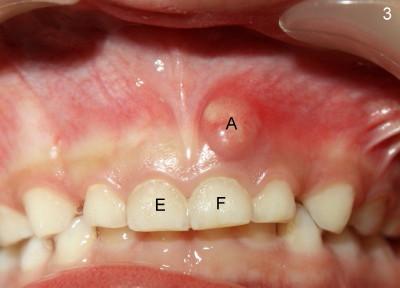
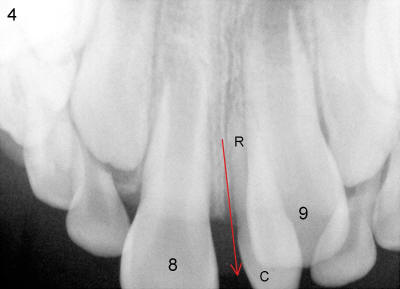
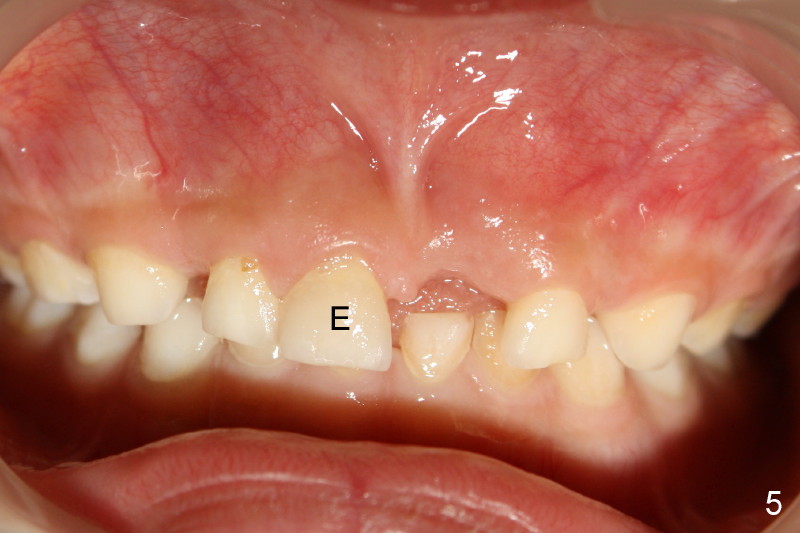
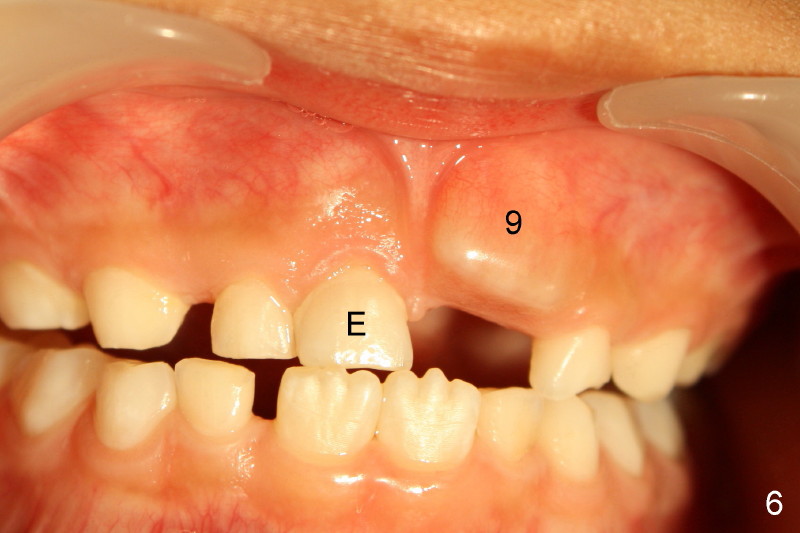
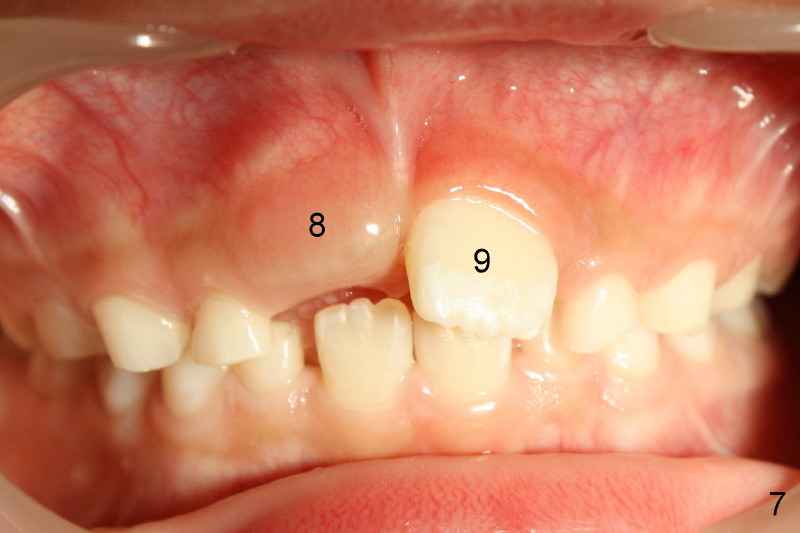
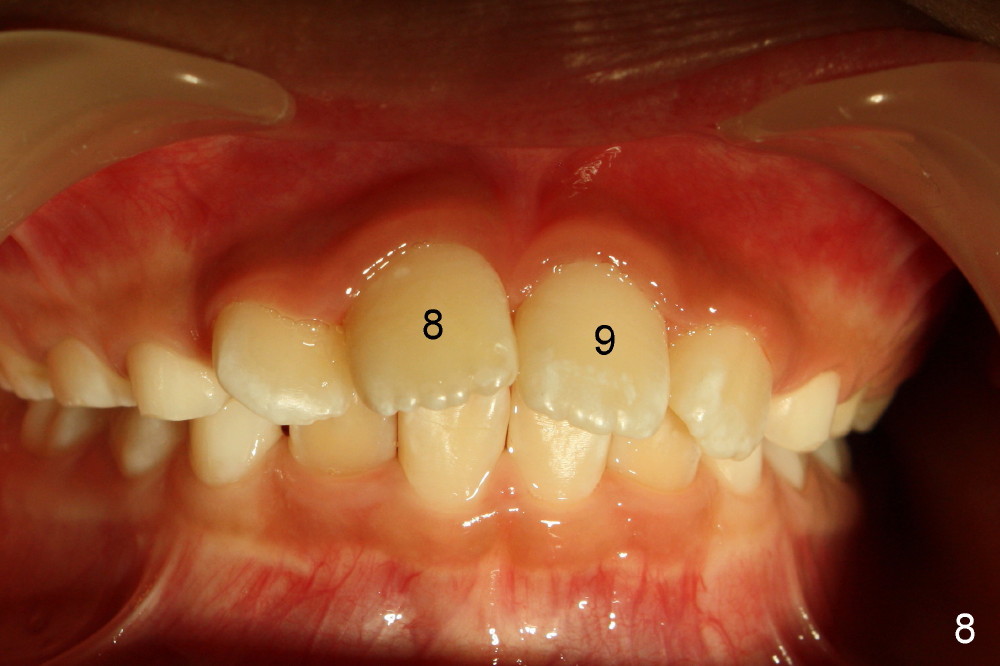
 |
 |
 |
 |
 |
 |
 |
 |
Early Extraction of Extra Tooth
Justin had an accident before his 5th birthday. A baby front tooth (Fig.3: F) had an abscess (A). X-ray accidentally shows an extra tooth (Fig.1 S: supernumerary tooth, also called mesiodens, a tooth that forms near the midline of our jaw) above the other baby tooth: E. The adult front teeth (8,9) are above S, E and F.
The root (Fig.2: R) of a normal upper tooth (such as #9) is always above its crown (C). As the root is becoming longer, the tooth grows downward (black arrow). However, the arrangement of this extra tooth is just the opposite: the root is below its crown. As the root is elongating, the extra abnormal tooth grows upward (red arrow). In fact this extra tooth is longer as compared to that in Fig.1. X-ray in Fig.2 was taken 8 months after Fig.1. Continuing growth of this extra tooth will most likely block the normal downward growth of the tooth #8. Therefore, the extra tooth should be taken out as soon as possible. In fact it was done before Justin's 6th birthday, when he was a little bit more mature. Another reason is that the previously injured baby tooth F developed an abscess (A) in its root tip.
Fig.3 is clinical view before extraction. In fact, the young patient is doing fine after extraction. Wound heals well in a month (Fig.5). Most importantly, there is no ill effect on child's mind. He is very pleased to come back to see us probably due to parental education. Eleven months after surgery, a permanent front tooth is ready to come out (Fig.6: 9). The baby tooth E is very loose and then extracted. Another seven months later, the tooth #9 has come out (Fig.7). The other central incisor is ready to be born (#8). A photo taken 2 years 5 months after treatment shows that the two central incisors are erupted (Fig.8: #8,9).
If the crown/root arrangement of extra tooth is the same as that of a normal one (Fig.4), it can be removed when it comes out. This happens to a 7-year-old boy, Gavin. The surgery is less traumatic than the one mentioned above, when the extra tooth is still inside the gums.
Xin Wei, DDS, PhD, MS 1st edition 06/15/2011, last revision 11/02/2013